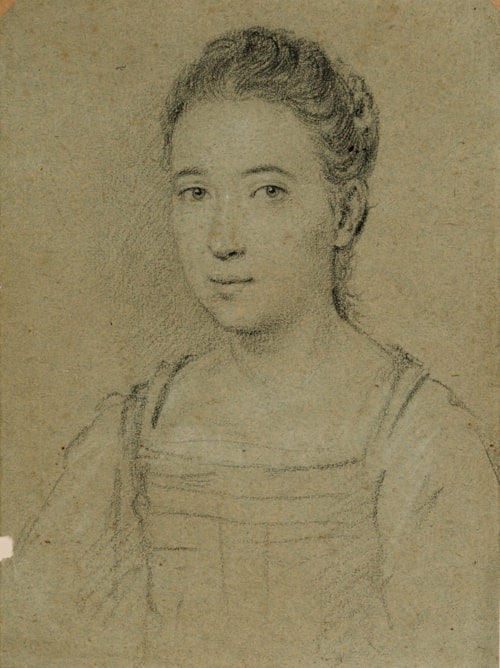
Attrubuted to Ottavio LEONI
Rome c.1578 - Rome 1630
Biography
Although he painted a number of works for Roman churches, as well as small-scale cabinet pictures of mythological or allegorical subjects, Ottavio Leoni is best known as a portrait painter and draughtsman, described by Federico Zuccaro in a letter of 1606 as an ‘eccellente miniator di ritratti’. He was the son of a miniaturist and medallist from Padua, and although he himself was born in Rome he was often known as ‘Il Padovano’ in later life. Although he painted at least two altarpieces for Roman churches, and also produced a number of easel pictures, Leoni developed a particular reputation as a specialist in portraiture. However, while his biographer Giovanni Baglione comments that the artist drew as many portraits as he painted, very few examples of his painted portraits are known today.
Leoni produced over seven hundred finished portrait drawings of his contemporaries in Rome, including not only members of the aristocratic families of the city but also writers, artists, scientists and ecclesiastical figures. As Baglione noted, ‘He portrayed not only the Supreme Pontiffs of his time, but also the Cardinal Princes, and titled Lords, and others of quality, no matter how famous they were, both religious and secular alike, were at various times drawn by him…There is no Prince, Princess, Gentleman, or Lady, as much as private individual, who has not been portrayed by Ottavio.’ Elected principe of the Accademia di San Luca in Rome in 1614, Leoni also drew many portraits of contemporary artists working in the city, including Caravaggio, Bernini, Guercino, Guido Reni, Simon Vouet and the Carracci. Leoni began numbering his portrait drawings sequentially from January 1615 onwards, inscribing the month and year of execution on each sheet, and from around 1618 often drew in a combination of red, black and white chalks on blue paper.
Significant groups of portrait drawings and prints by Ottavio Leoni are today in the collections of the Kupferstichkabinett in Berlin, the Fitzwilliam Museum in Cambridge, the Accademia Toscana di Scienze e Lettere ‘La Colombaria’ and the Biblioteca Marucelliana in Florence, the Palazzo Rosso in Genoa, the Metropolitan Museum of Art and the Pierpont Morgan Library in New York, the Ashmolean Museum in Oxford, the Louvre in Paris, and the Albertina in Vienna.


